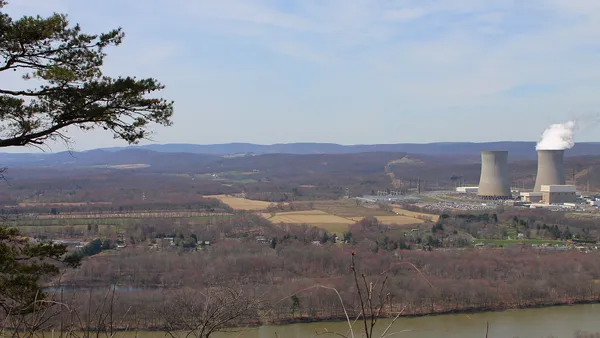Dive Brief:
- The U.S. Environmental Protection Agency is withdrawing draft model carbon trading rules finalized for Clean Power Plan compliance from interagency review, but has made working drafts of them available to the public in response to requests from more than a dozen states.
- The drafts will not be published in the Federal Register and carry no legal authority, but lay out methods states could use for reducing carbon emissions, including how they might trade using a mass- or rate-based emissions scheme under the Clean Power Plan.
- In addition to carbon trading models, EPA also released materials on how states can evaluate, measure and verify energy savings from efficiency to meet emissions reductions goals.
Dive Insight:
A blog post by Janet McCabe, who serves as U.S. Environmental Protection Agency's acting assistant administrator for the Office of Air and Radiation, doesn't make it clear why the agency is withdrawing them from review. But it bears noting the post came on the same day President-elect Donald Trump was formally voted president the electoral college.
The President-elect has promised to dismantle the Clean Power Plan and repeatedly questioned mainstream climate science.
Opponents said rolling out the model cap-and-trade program violates the Supreme Court's stay on the CPP, which halted implementation. But the EPA argued that a number of states have requested guidance on crafting compliance plans in case the rule is held up in court.
EPA proposed the model rules last August, alongside the final Clean Power Plan. The program would allow states to comply with the federal regulation if they chose to enter into the voluntary trading program. Under the program, states would earn an additional credits through early investments in clean energy through a completed Clean Energy Incentive Program (CEIP).
Both the rate- and mass-based approaches are "designed to be ready for interstate-trading and would allow states to incorporate the (CEIP)," according to the draft released by the EPA. The incentive program would reward states that take early action to invest in renewable resources.
The CPP, which aimed to cut 32% of emissions from existing power plants, is being challenged by two dozen states and is currently under review by the D.C. Circuit Court.
If upheld, it could be appealed to the U.S. Supreme Court, though a Trump administration may opt not to defend it. Oklahoma Attorney General Scott Pruitt, tapped by Trump to head the EPA, is one of the leaders of the legal campaign against the CPP and has sued the EPA over multiple air regulations.
Even before he takes office, opponents of EPA regulations are already pressuring Trump to gut them.
This week, 24 states sent a letter to Vice President-elect Mike Pence and other Republican leaders, calling for the incoming administration to roll back the new carbon rules immediately. The 36-member House Freedom Caucus, a group of the most conservative Congressmen, have asked Trump to eradicate 200 regulations set during the Obama administration in his first 100 days.














